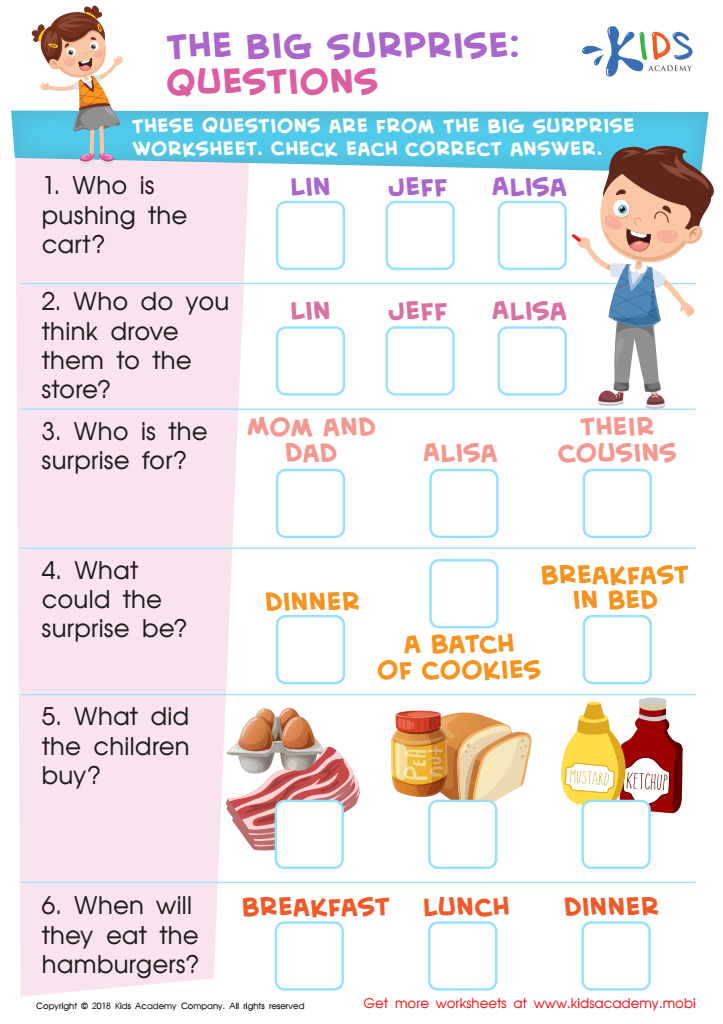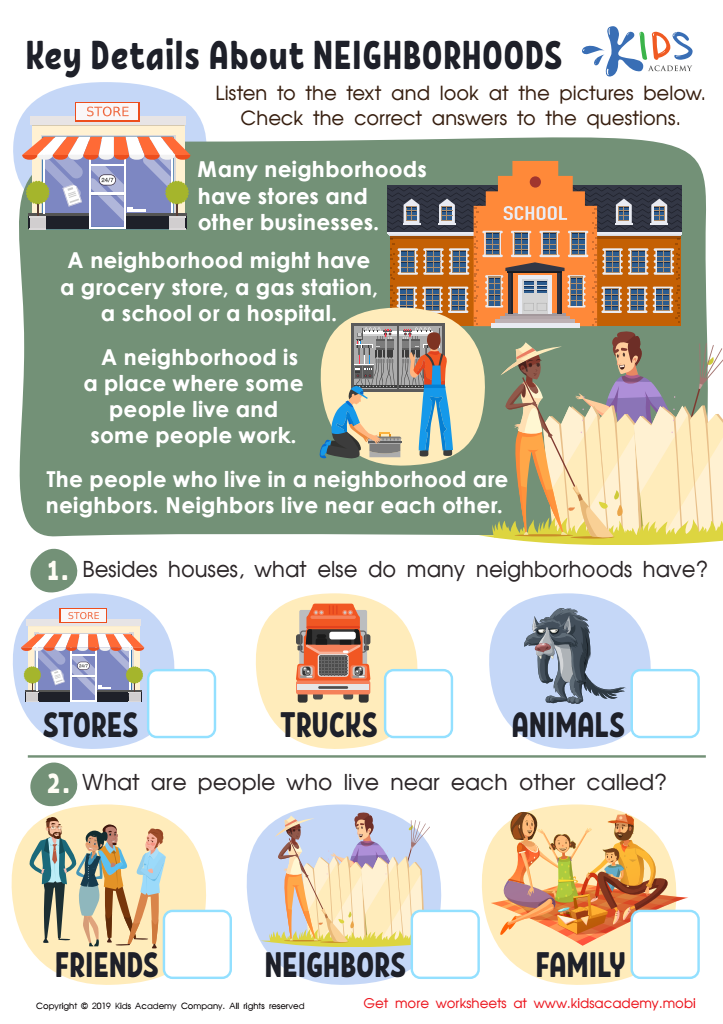Detail identification Normal Reading Comprehension Worksheets for Ages 6-8
3 filtered results
-
From - To
Our Detail Identification Normal Reading Comprehension Worksheets are designed for children aged 6-8 to enhance their reading and comprehension skills. These worksheets focus on helping young readers identify key details in texts, improving their ability to comprehend stories and extract important information. Through engaging passages and targeted questions, kids will develop critical thinking and analytical skills essential for academic success. Ideal for classroom use or at-home practice, our worksheets are an excellent resource for parents and teachers to support children in becoming proficient, confident readers. Explore our collection and help your child master the art of detail identification.


The Big Surprise: Questions Worksheet


Key Details from the Princess and the Pea Worksheet


Key Details Neighborhoods Worksheet
Detail identification and normal reading comprehension are crucial skills for children ages 6-8, and parents and teachers should prioritize their development for several reasons.
First, mastering these skills lays a foundation for future academic success. When children can identify details in a text, they better comprehend the story's main ideas, characters, settings, and events. This deeper understanding aids them in subjects beyond reading, such as science and social studies, where interpreting written information is vital.
Second, strong reading comprehension fosters a love for reading. When children can follow and understand stories, they are more likely to enjoy reading and seek out books independently. This intrinsic motivation is essential for developing lifelong reading habits.
Third, these skills enhance critical thinking. Identifying details helps children analyze and synthesize information, enabling them to form logical conclusions and inferences. This critical thinking ability is invaluable not only in academics but also in daily problem-solving and decision-making.
Moreover, good reading comprehension contributes to improved communication skills. Understanding nuances in text helps children appreciate context, tone, and perspective, which are essential for effective speaking and writing.
Therefore, parents and teachers should actively support detail identification and reading comprehension through read-alouds, guided reading sessions, and discussions about books. By doing so, they help children become proficient readers and thinkers, setting them up for ongoing success.
 Assign to My Students
Assign to My Students





















